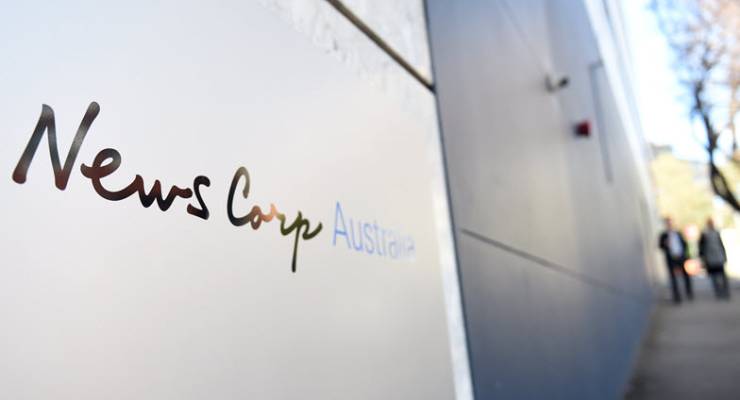
The profound distrust in commercial media revealed in last week’s Roy Morgan Trust survey once again shows the challenge the industry faces in persuading people to pay directly for news and information. At the same time, the high trust recorded by public broadcasters — particularly the ABC — demonstrates the imperative for commercial media to tear them down, with or without the support of government ministers.
It’s a context that forces traditional media shifting behind paywalls to ask themselves: just what are we asking people to pay for? News you can trust? Or confirmation bias?
The survey ranks net trust by subtracting reader distrust from reader trust. For commercial media, this leaves a bleak figure of -16% for television and -13% for newspapers. The Roy Morgan net figures for individual companies are available upon subscription only, but their public statement notes that the ABC had an extraordinarily low “distrust” figure of 9% — not much more than the family, friends and supporters of the Institute of Public Affairs.
Other than the public broadcasters, the only media company with a positive figure was Fairfax. Statistically, that suggests that News Corp are carrying a fair bit of the load of the overall institutional distrust. According to Roy Morgan, the top three reasons for institutional distrust are: false or fake news, bias and sensationalism, followed by commercial or political self-interest.
[The technology that could restore public trust in journalism]
The terminology of “fake news” may be relatively new, but these criticisms have been around for decades. Journalism has tried to drag the industry out of the distrust mire with self-regulation through codes of ethics since the 1940s and 1950s, and through press councils since the 1960s and 1970s.
Journalists, rightly, reject this critique and have hunted trust through journalistic practices which have morphed from “all the news that’s fit to print” to “objectivity”, on to “fairness”, and now “transparency” and an assertion of institutional rights as the fourth estate. However, too much of modern Australian journalism has been shaped out of the strength of tabloid and shock jock journalism, resulting in an ecosystem that is too often experienced as a “24-hour resentment machine and confirmation bias inferno”, according to US media academic Jay Rosen (tweeting here on the stark differences between US and European broadcasting environments).
That inferno has driven up attention, while driving down trust.
So, we’re still trudging on, carrying that load of institutional mistrust. Yet, as traditional media attempt to shift their business from advertising to reader revenues, trust is the brand newspapers online are holding out to both readers and advertisers.
According to the survey results, these principles still underpin the trust in the ABC. As Roy Morgan CEO Michele Levine said, “Australians told us that their trust of the ABC is driven by its lack of bias and [its] impartiality, quality journalism and ethics”.
The commercial media attacks on the integrity of the ABC — largely, although not exclusively, from News Corp — have been as much about dragging public perceptions of the ABC down to the commercial level. If the kettle can be as blackened as the pots, there might be a market opening for commercial media. Last week’s survey doesn’t suggest that’s a viable strategy.
There is an alternative: if readers won’t pay for the truth you have, give them the truth they want. That’s the marketing logic of selling confirmation bias.
It’s the model that underpins the Fox News network in the US. Its “Fair and Balanced” branding has never been about promising that the network is fair and balanced in itself as, say, a public broadcaster is expected to be. It’s overtly about providing a fair conservative balance to the so-called liberal media.
In the Australian context, there may not be a mass market for a generalist commercial news service supported by reader revenues. There are plenty of niche markets, although it’s hard for traditional mass media, under the weight of their own cultures and expectations, to re-position themselves into one of those niches.
So far, of old media, only The Australian seems to have grabbed the opportunity.








As a caring Australian I would never support financially or in any other way anything to do with Rupert Murdoch, his NewsCrap print and Foxtail electronic organisations or the muppets and maggots that work for and infest those organisations. There is now so much opportunity to get news and current affairs outside Rupert’s domain of fake news and affairs that there absolutely no need for Rupert and his business to exist in Australia.
There is, apparently, some leeway given to the Hun because of the Cabbage Patchers’ obsession with AFL – more fool them.
There is no excuse for any sentient being allowed, nay compelled, to vote absorbing any of the lies, dissembling, obfuscation and utter bullshit produced by the mudorc via his other organs.
The bastard is what would otherwise be known as a foreign agent of influence but the Rodent changed the law to allow him to regain his Oz citizenship.
(Australians of foreign birth have always been able to hold dual/multiple citizenship but anyone Australian born who elected to take up foreign citizenship thereby lost their Oz citizenship. By law.)
Fairfax looks to be trying to steal that niche from The Oz, with its rightward shift marked by the sackings of Michael West and Michael Pascoe and hiring of David Crowe.
Yes DF; he’s also president of the Canberra Press Gallery; does he never sleep.
I ditched the now virtually unreadable SMH for the free thenewdaily.com.au . Pascoe and others there are plenty enough for a daily news read.
Ever wondered what ‘a turd using a saw’ would look like?
Wonder no longer. Get a load of our cess pool of commercial media trying to cut through the ABC stilts.